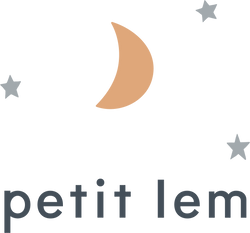Let the baby-proofing begin!
Amid the picture-worthy nursery and mamaRoo swing set in the cozy living room scene, there’s another element we need to envision in our home when expecting a baby: safety products. According to Nancy Reynolds, owner of Babysecure, unintentional injuries or what we refer to as “just an accident” is the leading cause of hospitalization in children. The good news is, with the proper knowledge and a different mindset a great number of them can be prevented making our home a safe place to bring our baby. Reynolds gives us her best advice, based on over 35 years of safe-proofing homes.
Make it part of your baby budget
It’s never too early to start thinking about childproofing. Especially, if it’s something you have to fit into a budget. “By the time people are looking to childproof, they have already spent so much money on baby equipment, they don’t want to spend much more,” says Reynolds. Parents often get carried away with baby products that kids outgrow quickly but setting some money aside from the very beginning for safety products, like gates, can prove to be a very practical move.
If you’ve let it slip, start considering childproofing no later than 6 months of age. Many who decide to “wait and see” have to catch up once their baby turns a year old and starts crawling and walking.
Being in the same room is not enough
The biggest misconception parents and caregivers have is that being in the same room keeps a child from getting injured. “Parents say it all the time, that they watch their children like a hawk and never let them out of their sight,” says Reynolds, “this is actually not possible to do all the time and definitely doesn’t support injury statistics.” According to Health Canada, the majority of injuries happened while the children were being supervised by a parent or caregiver. “It all just happened too quickly for them to react.”
Babies don’t understand NO
One of the most dangerous misconceptions a parent can have is that their baby will learn the meaning of the word no, if repeated enough. “The lack of awareness in parents of the developmental differences between a baby and a toddler can greatly impact their safety,” explains Reynolds. “Most people can’t grasp that it’s basically impossible for a baby to understand the word no.”
Simply removing risks allows your children the freedom to learn through discovery and become a self-sufficient person. You don’t want your children to lose their initiative to discover through experiencing and experimenting with how things work—their self-esteem and self-worth depend on it. You also don’t want them to learn that the way to get your attention is to do something that will elicit a negative response from you.
Don’t cut corners
“Most people who contact me will say they need gates but start with the fact that they want to avoid screws and destroying their home,” says Reynolds. “People will use pressure gates for the top of the stairs because they are easier to install without screws. Not only are they unsafe because they can be pushed out, but the pressure needed for the gates to stay up causes structural damage to their railings. In order to be safe, you can easily avoid screwing into wood, metal or glass bannister posts with varied clamping kits but if a gate needs to be put up to a wall at the top of the stairs it must be screwed into a stud or a Gate Mount attached to the sheetrock in order to be safe.”
Get informed and seek a professional opinion
Most products and furniture you buy for your children will have safety warnings and instruction manuals. Failing to read them can often put your children at risk. Warning labels will often outline how close a baby monitor should be placed to a crib, for example. It’s also important to take action about the furniture with tip over concerns, like dressers and televisions in the home.
There is a great deal of misleading information on the internet and you can often see very comical YouTube videos of parents who display unsafe DIY solutions. It’s important to learn safety information from recognized accredited safety agencies, like Health Canada, Safe Kids and childproofing experts. If you’re looking for someone to help with childproofing, seek out a professional who has accreditation.
Nancy Reynolds, B.A. Psych.
Founder of BABYSECURE Inc. since 1987
Montreal's only ADVANCED CERTIFIED PROFESSIONAL CHILDPROOFER® Red Cross First Aid Instructor www.babysecure.ca 514-485-BEBE (2323)








